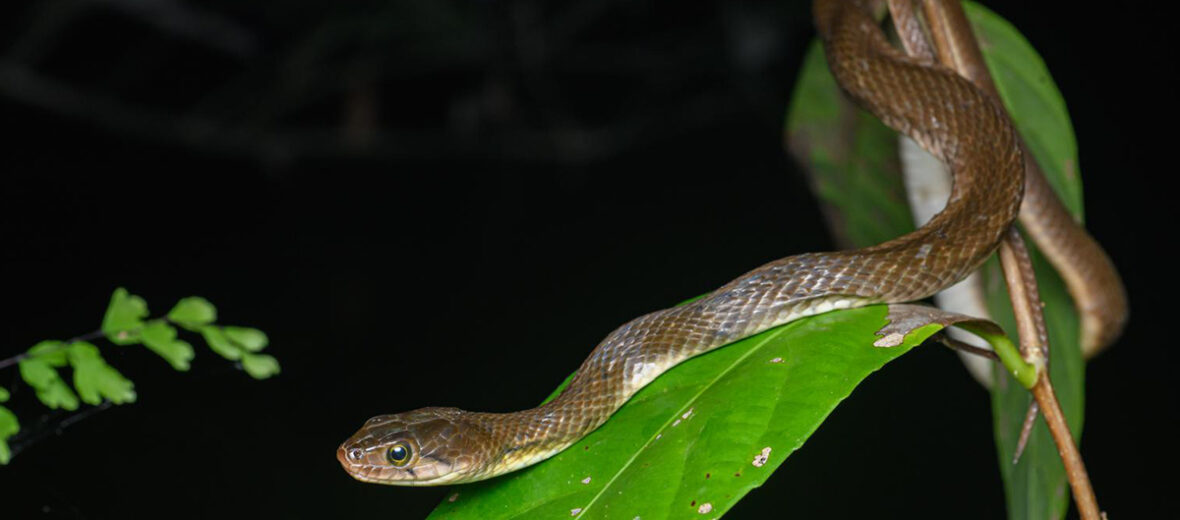
The checkered keelback snake, aka Asiatic water snake, is a nonvenomous colubrid snake that hails from southern and southeastern Asia. They prefer to dwell near and in freshwater lakes, marshes, ponds, rivers, and streams. Even though they face the threats of habitat loss at the hands of residential and commercial developments; hunting; trapping; and pollution, which renders some of their water sources toxic, these snakes have a stable population and are thus listed as Least Concern by the IUCN.
First the Stats…
Scientific name: Fowlea piscator
Weight: Up to 2+ lbs.
Length: Up to 5.7 feet
Lifespan: Up to 15 years
Now on to the Facts!
1.) These snakes can be more specifically found throughout Afghanistan, Bangladesh, Cambodia, China (Zhejiang, Jiangxi, Fujian, Guangdong, Hainan, Guangxi, Yunnan), India, Indonesia (Sumatra, Java, Borneo, Sulawesi), Laos, West Malaysia, Myanmar, Nepal, Pakistan, Sri Lanka, Taiwan, Thailand, and Vietnam.
2.) Keelbacks are cathemeral (active both day and night).
3.) A group of snakes is called a bed, den, knot, nest, or pit.
4.) The checkered keelback is a highly defensive snake that, when approached, will rear its upper body and head, extend its ribs to fan out a makeshift hood, like a cobra, and hiss loudly.
5.) If the afore mentioned tactics don’t work, they will repeatedly strike and bite.
But wait, there’s more on the checkered keelback snake!
6.) When attacked, these snakes have the ability of caudal autonomy (they can drop their tail).
7.) Feeding primarily on fish and aquatic amphibians, these snakes will also prey on mice, birds, lizards, insects, and sometimes even smaller snakes.
Did you know…?
Females will guard her eggs for about 8 weeks until they hatch, then the snakelets are on their own.
8.) These snakes are oviparous (lay eggs).
9.) Females lay up to a whopping 100 eggs, although 30 – 70 eggs is more common.
10.) Snakelets measure up to 4.3 inches, and are born precocial (self sufficient) like all snakes.
Now a Short Checkered Keelback Snake Video!
Be sure to share & comment below! Also, check out the Critter Science YouTube channel. Videos added regularly!
Want to suggest a critter for me to write about? Let me know here.
Some source material acquired from: Wikipedia & IUCN
Photo credit: Thai National Parks



